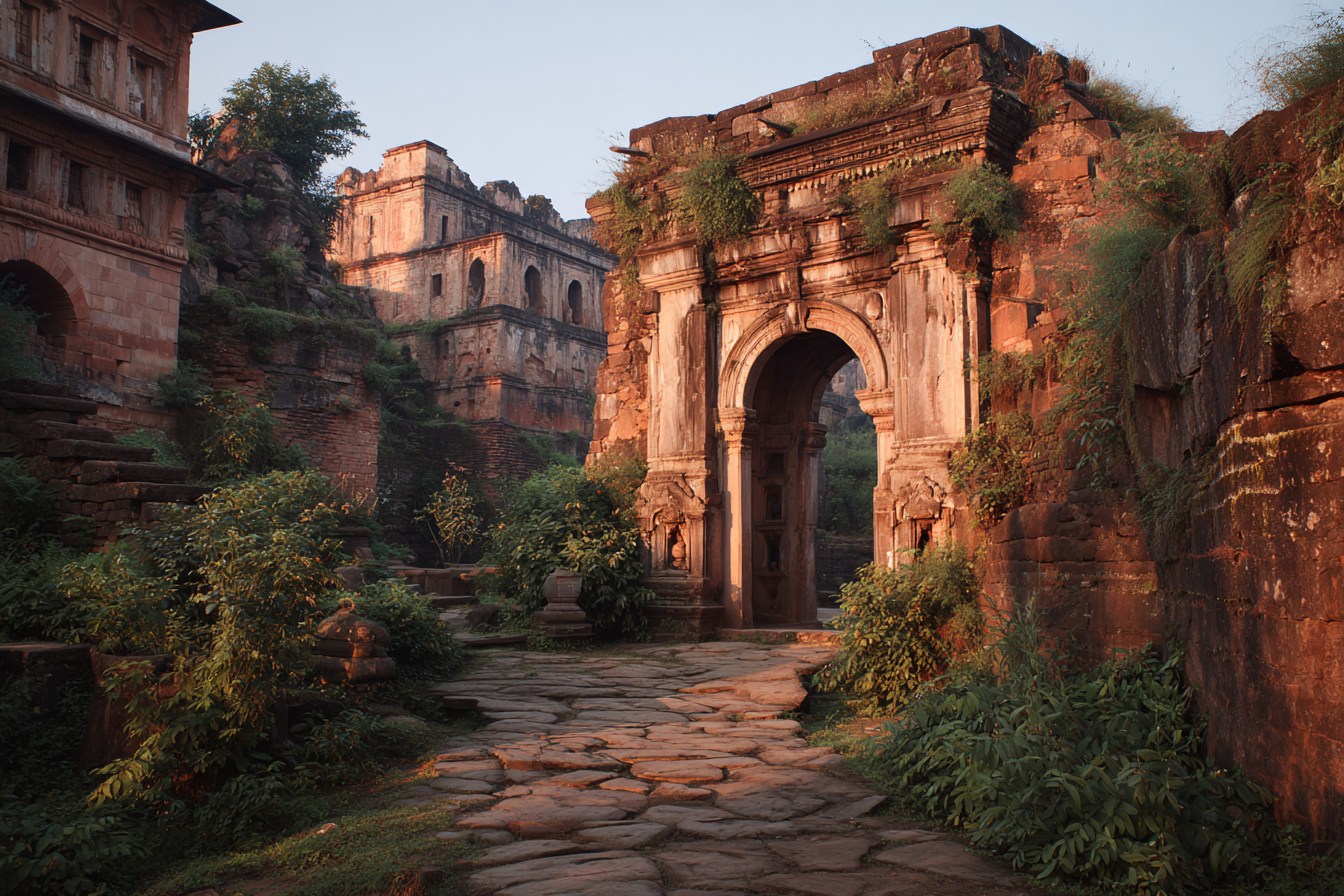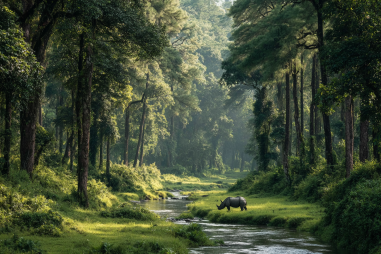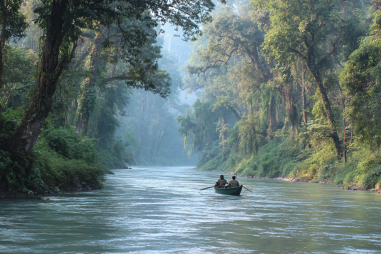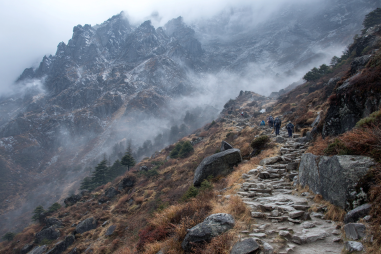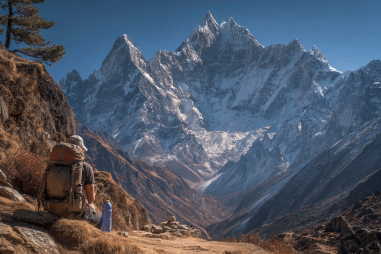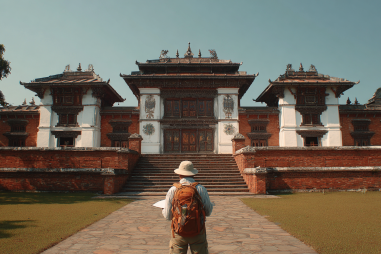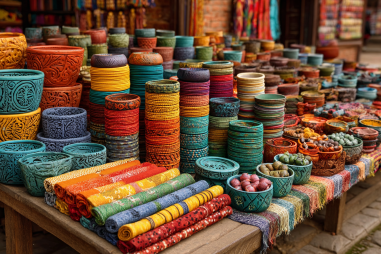Tucked away in the hills of western Nepal, the town of Tansen is a hidden gem rich with history and culture. Often overshadowed by larger cities, Tansen offers a unique glimpse into Nepal’s past through its well-preserved historical sites. This thriving hill town was once a crucial administrative hub and a cultural melting pot, and today it invites visitors to explore its palaces, forts, temples, and museums that tell captivating stories from centuries ago. Whether you’re a history enthusiast or simply curious about Nepal’s heritage, a tour of Tansen’s historical sites provides a fascinating portal to the country’s rich cultural tapestry.
Introduction to Tansen’s History
Tansen, the headquarters of Palpa District, has long been recognized for its strategic and cultural significance. Historically, it was an important center during the Shah and Rana eras and played a vital role in the administrative governance of western Nepal. Surrounded by lush green hills and picturesque landscapes, the town not only served as a military stronghold but also blossomed into a thriving cultural hub enriched with Newari influences due to its close connections with the Kathmandu Valley. The blend of natural beauty and historical significance makes Tansen a captivating destination to experience Nepal’s past.
Palpa Durbar Palace
The Palpa Durbar Palace stands as one of the most iconic historical attractions in Tansen. Originally constructed in the 18th century, this palace reflects the architectural prowess and the regal lifestyle of Nepal’s ruling elites. Although much of the palace suffered damage from earthquakes and neglect over the years, ongoing preservation efforts continue to revive its former grandeur. Visitors can explore the remains of the royal courtyards, intricate wood carvings, and traditional courtyards that offer a glimpse into the lifestyle of the palace inhabitants. The palace also provides panoramic views of the town and the surrounding hills, making it a favorite stop for both history buffs and photographers.
Rani Mahal: The Queen’s Palace
Known as the “Taj Mahal of Nepal,” Rani Mahal is a breathtaking palace located along the banks of the Kali Gandaki River near Tansen. Commissioned in the early 20th century by General Khadga Shamsher Rana in memory of his beloved queen, Rani Mahal is renowned for its exquisite neo-classical architecture that stands out against the traditional Nepalese style found elsewhere in Tansen. The palace’s whitewashed walls, elegant pillars, and tranquil riverside location emanate a romantic charm. While the interior is sparse, the building itself, set amidst lush surroundings, is a poignant reminder of love and grief, drawing visitors seeking both history and serenity.
Traditional Newari Architecture
One of Tansen’s distinctive features is its well-preserved traditional Newari architecture. The Newars, an indigenous group native to the Kathmandu Valley, have influenced the town’s buildings, evident in the intricately carved wooden windows, doors, and roof struts. Strolling through the narrow alleys of Tansen, visitors can admire beautifully constructed houses and communal courtyards that showcase centuries-old craftsmanship. This architectural style is not only aesthetically pleasing but also represents the cultural heritage and skilled artisanship that has been passed down through generations. The Newari architectural elements effectively narrate stories of the town’s history, religion, and community life.
Ancient Temples and Monasteries
Tansen is dotted with numerous ancient temples and monasteries, each with its own unique history and spiritual significance. These sacred sites are integral to the town’s cultural identity, serving as places of worship and community gathering. Some of the notable temples include the Bhairabsthan Temple, dedicated to Lord Bhairab, and the Siddha Baba Temple, a revered site in the region. The monasteries also showcase beautiful Buddhist art and traditions, reflecting the religious diversity that has existed in Tansen for centuries. Visitors can experience vibrant festivals, traditional rituals, and architectural wonders while exploring these spiritual centers.
Historical Museums in Tansen
For those eager to delve deeper into the history of Tansen and its surroundings, the historical museums provide valuable insights. Museums such as the Palpa Museum and the Rani Mahal Museum display artifacts, photographs, and documents that chronicle the town’s past. Exhibits often include royal regalia, ancient weapons, traditional costumes, and archaeological finds that illuminate various aspects of life in historical Nepal. These museums serve as educational hubs, helping visitors piece together the cultural, political, and social evolution of the region over time.
Preservation Efforts and Cultural Significance
Preserving Tansen’s historical sites is vital not only for retaining Nepal’s cultural heritage but also for promoting sustainable tourism that benefits local communities. Various government and non-governmental organizations have been active in rehabilitating damaged structures, promoting awareness, and engaging locals in preservation activities. These efforts ensure that the stories embedded in Tansen’s palaces, temples, and traditional houses will continue to inspire future generations. Additionally, Tansen’s cultural significance extends beyond architecture; it is a living town where traditional music, dance, festivals, and crafts thrive, making it a vibrant repository of Nepalese culture.
Tips for History Enthusiasts
If you’re planning a trip to explore Tansen’s historical gems, here are some handy tips to enrich your experience:
- Hire a knowledgeable guide: Local guides often share fascinating anecdotes and detailed information that you won’t find in guidebooks.
- Plan your visit during festivals: Experiencing local festivals can add a cultural dimension to your historical tour.
- Wear comfortable footwear: Many historical sites involve walking through uneven terrain and narrow alleys.
- Respect local customs: While visiting temples and traditional homes, observe local etiquette such as removing shoes and asking permission before photography.
- Extend your stay: Spending a night or two allows you to soak in the town’s ambiance and explore lesser-known sites at a leisurely pace.
By keeping these tips in mind, visitors can fully immerse themselves in the rich history and culture that Tansen offers.
A Historical Journey Through Tansen
Exploring Tansen’s historical sites is more than just sightseeing; it is a journey through Nepal’s diverse cultural and political history. From the grandeur of Palpa Durbar Palace to the romantic aura of Rani Mahal, and from the intricate Newari architecture to the sacred temples and lively museums, each landmark narrates a chapter of the town’s vibrant past. Tansen stands as a testament to Nepal’s ability to preserve its heritage while embracing the present. For travelers seeking an authentic and insightful experience, Tansen offers an enriching adventure into the heart of Nepal’s history.

